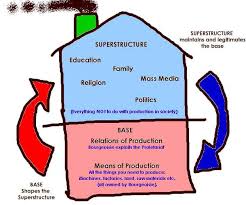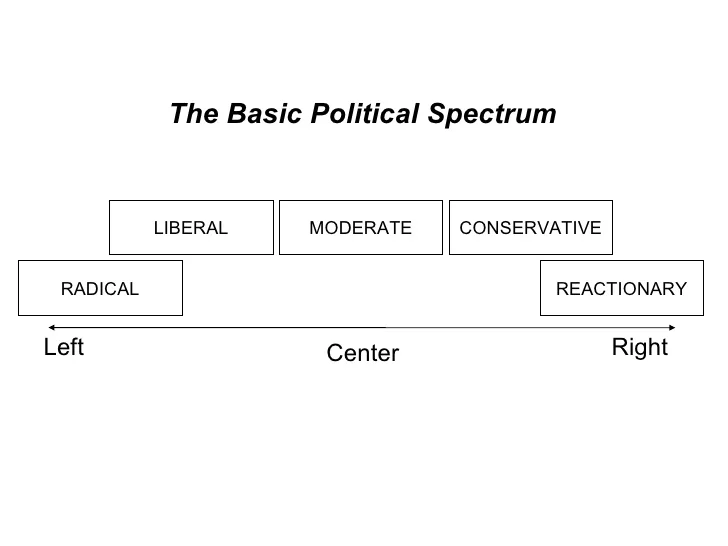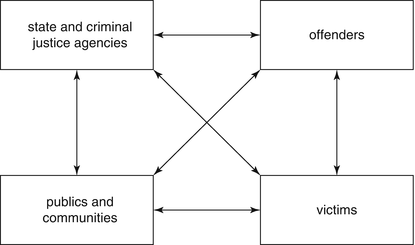Theories of Crime
formal social control: help to enforce laws and maintain order when crimes happen and the laws are broken e.g. police, courts, prison
deviance- behaviour that moves away from conventional norms and values.
controlled by informal social control e.g. family, peers, religion, media
facial tattoos, burping at a meal
→ can be crimes and deviance
Functionalism
Agree on 3 principles of crime and deviance showing it is a normal part of everyday life.
Can bring some benefits to wider society.
crime and deviance is not only inevitable but also necessary.
crime and deviance acts in a positive way to reinforce ideas of right and wrong in society.
there is such thing as a “perfect amount of crime” which is healthy and beneficial for society.
Positive functions
Remarking social boundaries- crime reaffirms social norms and values, and the boundaries of accepted behaviors so people know how they are expected.
Media Coverage- when serious a crime is shown on the media which reminds everyone that if they commit serious crimes, others will know about it. e.g. the sex offenders list.
Increased social cohesion- crime brings the wider community together in their disapproval which strengthens the relationship between individuals and shows criminals their behaviour is not welcome.
The safety valve- crime allows people to do lower level acts than breaking down social order through actions with more serious consequences.
Kingsley Davis: better for men to cheat with a prostitute than take out frustrations through domestic abuse. → less divorce
Warning light to a malfunctioning society- crime alerts us to a malfunction in society which can then be dealt with, it is a symptom of larger issues. e.g. high stealing rate may indicate poverty
Emile Durkheim ‘society of saints’
a society of saints would be populated by perfect individuals meaning there would be no crime.
however there would still be deviance as the general standards of behavior would be so high that the slightest slip would be regarded as a serious offence e.g. being slightly impolite would get strong disapproval
Strengths
has had an immense influence on sociology and led to discussion about crime having positive functions.
Highlights reality that crimes do reset social boundaries.
First to analyse deviance in terms of broad sociological theory.
Weaknesses
says a necessary amount of deviance is needed but offers no way of knowing how much.
does not explain why certain people are more likely to commit crimes than others.
would argue that murder is functional as is strengthens social bonds but the affect on the victim is not functional for them.
no explanation of why people commit crime just for why it is functional.
too optimistic about people being co-operative, people are self interested and so commit crime.
not all crime is functional- can isolate people further and cause them to leave home.
Robert Merton strain theory
people commit crime due to the way our social structure is organised
focused on the american dream (anyone can achieve success if they work hard enough) and utilitarian crimes e.g. theft, embezzlement
type | accept or reject striving for success? | means of achieving success | type of people |
conformist (normal) | accepts | legitimate | most people |
innovator (criminal) | accepts | illegitimate | gangsters |
ritualist (deviant) just given up | rejects | legitimate | people in dead end jobs |
retreatist (deviant) | rejects | illegitimate | alcoholics and homeless |
rebel (deviant) | rejects for alternative | illegitimate (as society seems them as weird) | Karl Marx, martin Luther king |
Albert Cohen
agrees with Merton about the way structures in society cause crime
focuses more on non-utilitarian crime e.g. vandalism, trespassing
young people experience status frustration- their social position has a long term negative impact on their lives
particularly affects working class boys living in deprived areas. they are more likely to struggle with education and lack qualifications needed for employment.
once they experience status frustration, these boys look for acceptance from others who also have norms and values different from mainstream. either in a deviant or criminal subculture.
looking for revenge so are therefore uninterested in money. use deviance, intimidation and non utilitarian crimes to earn status and respect from peers
Cloward and Ohlin
suggests varied social circumstances lead to 3 types of subculture.
criminal subculture
develops in more stable working class areas with an established pattern of adult crime.
adults create learning opportunities to encourage young criminals to do utilitarian crimes for financial reward rather than non utilitarian as they attract attention of police more.
conflict subculture
develops in a socially disorganised area with high population turnover and lack of social cohesion
leads to gang warfare through violence and street crime in order to obtain status within a subculture.
retreatist subculture
emerge among working class youth who are “double failures” (failed in mainstream and within the gang)
withdraw to drug addiction, alcoholism and utilitarian crimes to fund this e.g. drug dealing, prostitution
Travis Hirschi, Control theory
(agreed with Durkheim that social order is based on socialisation and social cohesion)
developed control theory to explain why most people conform and refrain from crime.
we are controlled by 4 social bonds which hold individuals back from getting involved with crime.
attachment- people are attached to those around them like friends and family, and are sensitive to and interested in their needs and wishes.
beliefs- people share moral beliefs such as respect for rights of others and need for obedience to the law.
committed- people are committed to everyday tasks like work. They have a stake in conformity so will not risk crime e.g. Cambridge girl who was involved in London riots.
involvement- people are involved and kept busy with work, school, family, sports teams, religious groups. They have no time or opportunity for crime.
Control theorists argue that all human beings still suffer from weaknesses which make them unable to resist temptation and then turn to crime, but these social bonds restrain them.
If these social bonds are weakened or broken then their self control is weakened so they turn to crime.
Hirschi’s social bonds show how we are held back from giving into temptation and committing crime.
→ Opportunity theory- an opportunity for offending must also be present for a crime to be committed. Not everyone who is lacking the 4 social bonds is a criminal but these people are more likely to give in to temptation when opportunities for crime present themselves.
Feminism
Malestream- the study of crime and deviance is mainly done by male researchers and the criminal justice is dominated by men. (1:2 female:male police officers)
Feminists argue that male sociologists suffer amnesia and distort studies. This means that female issues are forgotten, ignored or skewed.e.g. female victimization in sexual violence.
Frances Heidensohn
applies control theory to understanding low female crime rates (only make up 5% of prisoners).
agreed with Hirschi that people refrain from crime due to being restricted by social bonds but women are held back by the patriarchy while men have more freedom so have more opportunity for crime.
women would commit just as much crime as men if they were treated equally.
home- women’s time is taken up in housework and monitoring others (this limits opportunities. similarly, daughters are expected to stay closer to home than sons.
workplace- men hold power and authority over women as managers or supervisors. fear of sexual harassment limits freedom. the pay gap means that men get more money so therefore more opportunities.
public- women are controlled through male domination and violence, as women fear crime and sexual assault so may not go out after dark.
dated- more women working and a greater involvement in work and public spheres
female criminality is now rising
women are also policed by women which is not evidence for the patriarchy
Pat Carlen
researched w/c female inmates using unstructured interviews
suggested that women are encouraged to conform through choosing 1 of 2 exploitative, and socially approved deals.
Class deal- rewards that arise from working in paid employment enabling women to buy consumer goods and have a respectable home life.
Gender deal- refers to rewards that arise from fulfilling roles in the family and home, with material and emotional support from a male breadwinner.
→ Corston report (2007) - looking at the backgrounds of women in prison showed they had high levels of long term unemployment, the majority had left school with no formal qualifications.
1/5 had no permanent residence
1/3 lone parents
2/3 single
most women accept and achieve these goals but they are not available to all women.
e.g. unemployed, experiencing poverty, have abusive partners
when these deals are not accessible or if they break down then women choose crime because they have little to lose.
role of patriarchy is overstated e.g. more opportunities for financial success and a change in attitudes to family life.
more control on women now because there is pressure to abide to both deals
only focused on female offenders who had accepted neither deal, so does not explain criminality of working women or mothers.
Marxism
argue that the justice system is another tool used by the ruling class
superstructure/base model- economy is the foundation which the rest of the structure is built upon.

Criminogenic capitalism (genesis of crime is capitalism)
capitalism is an economic system which will inevitably cause crime
one group prospering means another group is suffering
- constant advertising → causes envy leading to utilitarian crime
- alienation → frustration and non utilitarian crime
The State and law making
crime is a rational response for all social classes even though statistics make it seem like it’s a working class phenomenon
state abuse their power to create laws that protect their interests
Chambliss- all laws are there to serve the ruling class
most british law is based around protecting private property
ruling class have power to prevent introduction of laws that would threaten their interests.
few laws challenge unequal distribution of wealth
laws to do with health and safety seem to benefit the proletariat but they also keep them fit and therefore working, and help creates false class consciousness (in that they feel protected).
Selective law enforcement
capitalists themselves feel pressure to commit crime in order to get ahead or keep up
despite all social classes committing crime, the criminal justice system does not penalise all equally.
White collar crimes: done by middle and upper class linked to their position of power e.g. tax evasion, bribery, embezzlement.
Blue collar crimes: done by everyone but especially the working class e.g. theft, squatting, murder.
Crime is designed to keep capitalism stable
being seen as a w/c problem divides the Proletariat and averts their attention away from capitalism.
seeing criminals as disturbed also disguises the true nature of crime.
Neo Marxism and crime
Focus on crime as a voluntary act
working class are seen as Robin Hood figures committing Robin Hood crimes as an act of rebellion against the ruling class and capitalism.
see actions as necessary in a fight for social equality.
e.g. theft, burglary, vandalism are symbolic and meaningful acts of resistance to ruling class oppression.
Strengths
- shows a strong link between crimes and the interests of the ruling class
shows that some crimes are dealt with much more harshly
- manages to explain why different classes commit crimes and the different types.
Weaknesses
- unrealistic to just get rid of capitalism
- very deterministic that individuals are controlled by society, yet free will means individuals choose to commit crime.
- lots of working class people do not commit crime.
- some crime is working class against themselves rather than against ruling class.
- prosecution of the ruling class does happen.
- communist states does have high crime rates.
- not all capitalist societies have high crime rates e.g. Japan, Switzerland
Realism
Argues that crime is a real issue
- focuses on impact of crime on victims and local communities looking at statistical evidence of crime.
- developing practical policies to reduce crime in order to improve people’s everyday lives.

left and right realism both agree that crime is a real issue that needs to be addressed but have differing views on the main problems and how to come up with a solution.
LEFT REALISM | RIGHT REALISM |
main points:
| main points:
|
Offenders
Marginalisation (pushed to edge of mainstream society)
Bulimic Society
Square of crime Young and Lea: necessary to examine inter relationships between 4 element of crime and how they influence crime levels  . | Biological differences
The Underclass
Culture and socialisation
Rational Choice, Ron Clarke
|
Evaluating left realism
draws on a range of other theories e.g. status frustration, strain theory. so more of a full explanation
focuses on practical solutions
neglects other responses to relative deprivation e.g. retreatism, ritualism
malestream- feminists argue that gender is a significant issues that is neglected particularly crime slike domestic violence where the victim is mainly a women.
does not pay attention to white collar crimes despite a big impact.
Evaluating right realism
Addresses immediate cause of crime
recognises importance of community response
does not address wider structural causes of crime like FUNC, FEM, MARX
some crimes do not offer obvious gain like vandalism and violence so does not mean offenders are weighing up risks and rewards.
rational choice theory- does explain the attractiveness of risk taking: thrill and buzz in committing a crime.
does not pay attention to white collar crimes despite a big impact.
Interactionism
Focuses on crime and deviance being socially constructed so is not a real issue that needs to be solved.
Agencies have the power to decide which acts get labelled as criminal or deviant.
Howard Becker- an act is only deviant if society has a negative reaction to it.
moral entrepreneurs: agencies that impose their definitions of deviance e.g. media, police, legislature, judiciary
Primary deviance: has not been publicly labelled as deviant yet. e.g. using illegal drugs or child pornography have few consequences if no one else finds out about it.
Secondary deviance: once the offender is discovered and publicly exposed and the label and social stigma of ‘deviant’ is attached. e.g. ‘paedophile’ becomes master status so other identifies are displaced.
Aaron Cicourel: subjective perceptions and stereotypes held by law enforcement agencies can affect whether criminal labels are attached.
Studied delinquency in 2 Californian cities: → double standard
juvenile crime rates were consistently higher in w/c/ areas than m/c
this was due to the police’s perception that middle class youth came from good backgrounds with family support (so behaviour was a temporary lapse in judgement) meaning charges weren’t brought against them.
they held the opposite view on w/c youth so more formal police action was taken against them.
deviant career- labelling process and societal reaction led to a self fulfilling prophecy
- those labelled as deviant or criminal face rejection from many social groups and become outsiders.
- then continue to act in the way they have been labelled making the label stick as a master status.
- individual may then join a deviant subculture leading to more crime and deviance.
Strengths
shows importance of reactions of others and those in power in defining and creating deviance.
shows how labelling can lead to self-fulfilling prophecy and deviant careers. therefore revealing importance of prejudice and labelling.
provides insight into nature of deviance not provided by structural theories.
Weaknesses
does not explain the cause of deviant behaviour or the different acts people commit.
the deviant becomes a victim as there is too much focus on the labelling than the deviant.
assumes act is not deviant until it is labelled as such yet many know perfectly well they are deviant.
no real policy solutions to crime beyond making fewer rules and not ‘naming and shaming’ offenders. not much consolation for victims of crime.
does not explain why there are different reactions to deviance or where stereotypes come from in the first place.
Postmodernism
argue that crime is a social construction based on the narrow legal definition.
law is outdated and does not reflect diversity of postmodern society.
the definition of crime is an expression of a particular view among those with power denying people freedom.
transgressive approach: looking past the traditional definition and look at crime differently- being based on harm caused not rules broken.
HENRY + MILOVANOVIC
harms of reduction: power is used to cause a victim to experience some immediate loss or injury.
harms of repression: power is used to restrict future human development or reduce dignity and respect.
hate crimes- perceived by victim or any other person to be motivated by hostility or prejudice based on a person’s ethnicity, religion, sexual orientation or disability.
may be committed due to low self esteem and want to gain respect from others through harming or humiliating someone else.
edgework, katz+lyng: individuals choose to commit acts that harm others as they get a thrill from risk taking and living on the edge. young people push the boundaries to see what they can get away with e.g. joyriding, vandalism, shop-lifting, drunkenness.
Strengths
offers explanation for non-utilitarian crime which have no material benefit.
provides fuller explanation of pattern of crime as ‘harm’ encompasses range of behaviour that have been neglected.
looks at real life experiences.
recognises other dimensions which cause crime.
Weaknesses
does not recognise that consumer society can lead to resentment within those who can’t participate (right realism/ marxists)
does not explain why most people don’t use their power to harm others, and have strong morals.